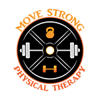What I Learned Interning for Move Strong PT
By Paul Yoon
Last week (Apr 2nd) marked the end of my three-month clinical rotation here at Move Strong PT. As I get ready to graduate this Spring, I do not think I could have picked a better facility to finish my last clinical rotation. Seeing the PTs here so dedicated to their craft makes me excited about physical therapy and excited to enter the profession. Here are four things I learned from this internship.
Patients just want to be taken care of
This is, by far, my most important takeaway from this clinical. In a healthcare model where many patients can be categorized as just a number, it is not uncommon for patients to feel as though they are not getting the help they deserve or need.
What I took away from this clinical was that the simplest gestures can make a patient feel valued and taken care of. Very simple acts such as listening and asking about life outside of the patient’s injury, as well as something as simple as reaching out and communicating with the patient’s sports coach, doctor, or surgeon can make a huge difference. This is something I will remember for the rest of my clinical career and hope to do the same for my future patients. It is something that will only take a few extra minutes on my end, but will, I believe, have a huge impact on the other end.
Always test and retest after an intervention
Retesting the same exam measure after an intervention is the only way to know if your intervention was effective or not. I learned that this is important to check immediately after an intervention, as well as more globally after a few visits to monitor progress. Retesting is also extremely effective for building patient buy-in as they are able to see how physical therapy is eliciting an increase in strength, range of motion, or decrease in pain.
How to develop plan of cares for post-op ACL and UCL injuries
Moving on to clinical skills, I learned how to develop an effective plan of care for post-op ACL and Tommy John injuries, which was one of my main goals prior to the clinical. Along with specific exercise progressions and knowing what to expect (normal vs abnormal) after surgery, my biggest takeaway is graded exposure. No matter what exercise or sport you are returning the athlete toward, I learned the key is to carefully progress the exercise and total volume in a gradual manner week to week. Big changes can result in flare-ups whereas incremental changes lead to more favorable outcomes.
Infrasternal angles
Something I learned more about that I credit the strength coaches at Cressey Sports Performance for, is the impact of different infrasternal angles (ISA) on performance and training. A wide ISA will have a different range of motion and performance characteristics that make them better at certain movements compared to narrow ISAs. Similarly, a highly trained wide ISA’s training program will look very different from a highly trained narrow ISA’s training program. This is something I am thankful that I was exposed to at this clinical rotation, and hope to continue to learn about and apply to my future patients.
Above are the four aspects of clinical care that I took away from this clinical rotation. Thank you for reading along!
Tags:

April 8, 2021


